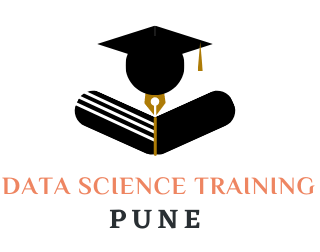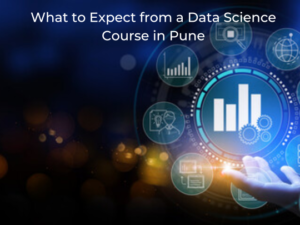Although they share many traits, data science and information technology (IT) nevertheless differ greatly from one another. Data processing and analysis using technology are common in both professions, but their methods, objectives, and results vary. The distinctions between IT and data science will be more thoroughly examined in this essay.
What is IT?
Information technology, or IT for short, refers to several procedures and apparatuses utilized in handling and transporting data. This includes devices and frameworks for handling and storing data, including networks, databases, hardware and software, and other systems. IT professionals are in response to these systems’ design, installation, and maintenance to ensure their security, dependability, and effectiveness.
360DigiTMG offers the best data science course in Pune to start a career in Data Science. Enroll now!
The function of IT specialists varies based on the company and the particular work. For example, while some IT professionals are in charge of end-user technical support, others concentrate on creating and managing intricate systems and networks. IT specialists should have a solid computer science, programming, and database administration background.
What is Data Science?
Computer science, statistics, and domain knowledge are all combined in the interdisciplinary area of data science to draw conclusions and information from data. With the aim of uncovering patterns, trends, and relationships that may be used to guide decision-making, data science entails applying statistical and computational approaches to analyze and understand massive and complicated data sets.
In their work, data scientists utilize vast datasets from diverse sources, comprising both unstructured data, such as images and text, and organized data, such as databases. They often collaborate closely with subject matter experts to comprehend the context of the data, produce insights that are pertinent to specific challenges or queries, and extract useful insights from these data sets using statistical and machine learning approaches.
Differences between IT and Data Science
- Focus and Goal
The primary goal of information technology (IT) is to ensure that information is efficiently maintained and processed so that users may access pertinent data when needed. Database administration, network infrastructure, cybersecurity protocols, and hardware and software system design, implementation, and maintenance are all included in this. IT primarily supports an organization’s daily operations by offering technological solutions that promote the effective use of data and communication technologies.
In contrast, data science has a more narrow focus on obtaining information and insights from data that can be applied to enhance innovation and decision-making. Finding patterns, trends, and connections in massive datasets that may be utilized to create new products, enhance existing ones, and gain a competitive advantage is the core goal of data science. Data collection, cleansing, analysis, visualization, and interpretation are a few of the phases involved in data science. The primary goal is to obtain knowledge and actionable insights from data that can enhance performance, effectiveness, and profitability, among other areas of a company.
- Data vs. Infrastructure
The concentration of their work is one of the main distinctions between IT and data science. IT specialists manage and maintain the technological systems and infrastructure required for an organization’s everyday operations. This entails maintaining hardware and software systems, managing databases, making sure computer networks are secure and stable, and offering end users technical help. IT infrastructure’s major objective is to support the entire functionality of an organization’s technological infrastructure.
In contrast, data scientists’ primary focus is on analyzing and interpreting massive datasets to gain knowledge and understanding that can be used to assist innovation, process improvement, and decision-making. Data scientists employ various analytical tools and methodologies to turn unstructured and structured data from many different sources into insights that can be used. Additionally, they are in charge of finding and producing new sources of data, devising algorithms to evaluate data, and creating visuals to convey findings.
- Skill Set
Depending on their particular field of competence, IT professionals need different skills. Employers typically seek IT professionals with a solid computer science and programming background and proficiency in various hardware and software technologies. To work effectively with end users, they should also possess strong teamwork, problem-solving, and communication abilities.
However, the ability to evaluate and comprehend huge datasets requires a special set of abilities from data scientists. These include excellent data visualization abilities, sophisticated statistical and mathematical understanding, fluency with data mining and machine learning algorithms, and competence with programming languages like Python and R. To effectively convey findings to non-technical audiences; data scientists also need to have excellent communication and presentation abilities.
- Applications
Many different businesses, including those in healthcare, banking, retail, and education, use IT. The creation and upkeep of software programs, network and cybersecurity management, database management, and technical assistance are some typical IT applications. In addition, digital infrastructures created and maintained by IT include cloud computing, the Internet of Things, and artificial intelligence.
Similarly to this, data science has numerous and varied uses. For example, in healthcare, data science creates individualized treatment regimens, forecasts disease outbreaks, and pinpoints risk factors for different ailments. Fraud detection, portfolio optimization, and risk assessment in the financial sector. Route optimization, demand forecasting, and autonomous vehicle technology are all applications of data science in the transportation sector. Additionally, data science is frequently applied in marketing, e-commerce, and social media to comprehend consumer behavior, spot patterns, and create specialized advertising strategies.
- Scope
With the development of technology, the breadth of information technology and data science is continually growing. As organizations increasingly rely on technology for daily operations, practically every industry needs IT workers. More sectors are realizing the benefit of using data to make educated decisions, which is increasing the scope of data science. Data scientists are in high demand, particularly in e-commerce, healthcare, banking, and transportation. As companies increasingly rely on technology and data to promote innovation, increase efficiency, and gain a competitive edge, both disciplines’ scopes are anticipated to continue to expand.
Conclusion
In conclusion, data science and information technology are two separate disciplines that are essential to the contemporary corporate environment. Data science aims to draw conclusions and knowledge from data, whereas IT focuses on effectively organizing and processing information. Each discipline’s skill sets and applications are very different; for example, IT professionals are largely in charge of managing and maintaining digital infrastructures, whereas data scientists use data analysis to support decision-making and spur innovation. As businesses increasingly rely on technology and data to achieve a competitive edge, both sectors have a broad range and are becoming more and more important.
Browse Other Courses
- Artificial Intelligence Course in Pune
- Business Analytics Course in Pune
- Cloud Computing Course in pune
- Cyber Security Course in Pune
- Data Analytics Course in Pune
- Digital Marketing Course in pune
- Ethical Hacking Course in Pune
- IoT Certification Course Training in Pune
- Machine Learning Course in Pune
- PMP® Certificate Course in Pune
- Python Course in Pune
- Tableau Course in Pune
Navigate to Address:
360DigiTMG – Data Analytics, Data Science Course Training in Pune
No. 408, 4th Floor Saarrthi Success Square, near Maharshi Karve Statue, opp. Hotel Sheetal, Kothrud, Pune, Maharashtra 411038
089995 92875
Get Directions: Data Science Training




